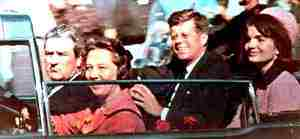Induction Heating
Rayon to Carbon to Graphite
Joe Loan and I departed the Ajax Magnethermic plant in Warren, Ohio very early in the morning of the 20th of November 1963. We took with us the temperature measuring instruments to record the data for a thermal conversion of carbon cloth to graphite cloth at Union Carbide's factory in Fostoria, Ohio. The equipment was already installed and the dry run test completed on a design of an induction furnace with graphite elements that I sold and Joe Lona designed that summer. The first run of a large roll of 42-inch wide cloth was completed without difficulties late in the evening. When we arrived the next morning the roll of cloth was gone with only a small amount of ashes remaining. The interior fibers retained enough heat to start the fire that burned it. Carbon like the wood that made it burns. The production staff of Union Carbide knew what to do and built a box to contain the next roll so air could not get to it while it cooled. The next morning they had the first production roll.
We departed around 10 AM on Friday morning of the 23rd of November 1963 for the trip back to Warren. The music being played on one of the local radio stations was stopped with the announcement that President Kennedy had been shot in Dallas, Texas. We were not able to pick up a clear network radio for a time and the local stations we getting bits and pieces including the Soviet connection. We later heard that the president was alive when he was admitted, but died at 1400 local time (1900 GMT) - 35 minutes after being shot.
Attached are two photos. The first was printed on most of the world's newspapers the next edition. The second was printed in many magazines and is a historical picture.


I took my wife and five children to a special church service in Howland Township the next morning.
The Warren Report later concluded he had been killed by shots fired by Mr. Oswald from the School Book Depository building. (He was married to a Soviet Citizen.) But conspiracy enthusiasts quickly turned the assassination into one of the most disputed events in modern history, with theories ranging from claims it was an elaborately staged suicide to the driver being the murderer.
This material Lona and I saw the day Kennedy was shot was the state of art for carbon fabrics used for the Aerojet project for the Mars rocket.
Rayon was basically 42% carbon with the balance being water. To convert the material it had to be heated to about 800 degrees C in a heater where no oxygen is present. The long process line started with a very large roll of rayon fabric that was 60 inches wide. A second roll was ready and could be attached to the first roll without stopping the process.
I think the first step was to pass the cloth through a solution of ammonia chloride before going through a drying stage that used heated air. The ammonia chloride acted as a catalyst to absorb water molecules from the rayon at about 350 degrees C. before it boiled away and condensed to be used again. The next step was to pass it through a heated zone until it reached about 800 degrees C. Finally through a cooling zone and the result was a 42-inch wide roll of carbon cloth.
Carbon cloth had many uses but some customers wanted graphite cloth. The transformation from carbon to graphite required a temperature in excess of 2200 degrees C. To reduce the time to complete this transformation the furnace temperature was set at 2700 degrees C.
Union Carbide and others were producing carbon fibers and threads at his time but the equipment was much too small to interest the team of Lona and Metcalf.
Carbon felt was being produced in simple batch ovens that also did not need the team of Lona and Metcalf.
Other processes will be attached to later chapters.

